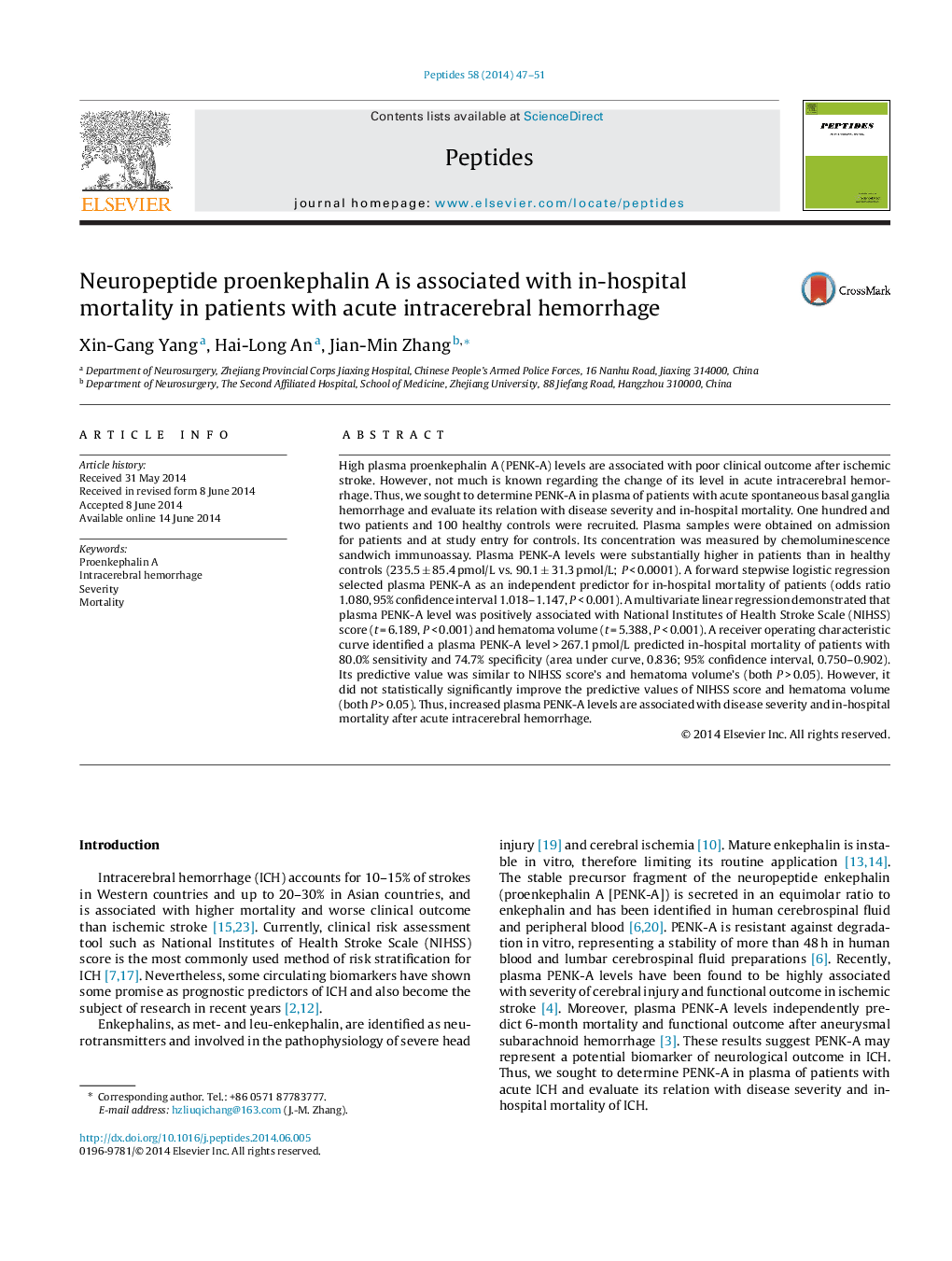| Article ID | Journal | Published Year | Pages | File Type |
|---|---|---|---|---|
| 2006011 | Peptides | 2014 | 5 Pages |
High plasma proenkephalin A (PENK-A) levels are associated with poor clinical outcome after ischemic stroke. However, not much is known regarding the change of its level in acute intracerebral hemorrhage. Thus, we sought to determine PENK-A in plasma of patients with acute spontaneous basal ganglia hemorrhage and evaluate its relation with disease severity and in-hospital mortality. One hundred and two patients and 100 healthy controls were recruited. Plasma samples were obtained on admission for patients and at study entry for controls. Its concentration was measured by chemoluminescence sandwich immunoassay. Plasma PENK-A levels were substantially higher in patients than in healthy controls (235.5 ± 85.4 pmol/L vs. 90.1 ± 31.3 pmol/L; P < 0.0001). A forward stepwise logistic regression selected plasma PENK-A as an independent predictor for in-hospital mortality of patients (odds ratio 1.080, 95% confidence interval 1.018–1.147, P < 0.001). A multivariate linear regression demonstrated that plasma PENK-A level was positively associated with National Institutes of Health Stroke Scale (NIHSS) score (t = 6.189, P < 0.001) and hematoma volume (t = 5.388, P < 0.001). A receiver operating characteristic curve identified a plasma PENK-A level > 267.1 pmol/L predicted in-hospital mortality of patients with 80.0% sensitivity and 74.7% specificity (area under curve, 0.836; 95% confidence interval, 0.750–0.902). Its predictive value was similar to NIHSS score's and hematoma volume's (both P > 0.05). However, it did not statistically significantly improve the predictive values of NIHSS score and hematoma volume (both P > 0.05). Thus, increased plasma PENK-A levels are associated with disease severity and in-hospital mortality after acute intracerebral hemorrhage.
